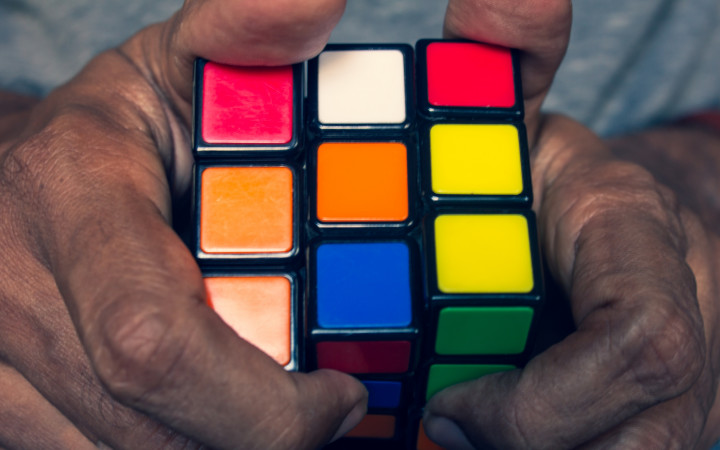Today’s Wonder of the Day was inspired by JOE. JOE Wonders, “How do you solve a RUBIKS CUBE” Thanks for WONDERing with us, JOE!
Do you love puzzles? We do! Whether it's a crossword puzzle, a challenging Sudoku, or a simple word find, we always enjoy putting our brains to the test.
Of course, there are also puzzles that put your brains and your hands to the test. What are we talking about? The world-famous Rubik's Cube, of course!
Way back in 1974, Hungarian professor of architecture Ernő Rubik created a three-dimensional cube with rows of blocks that would freely turn in multiple directions. Although some believe he created the cube to help his students understand 3D objects, he was actually trying to solve a structural problem: how do you create a cube with parts that move independently without the whole thing falling apart?
Rubik didn't realize he had created a puzzle until the first time he scrambled the cube and had to figure out how to get it back to its original state. Can you imagine what his moment of discovery must have been like? If you've ever played with a Rubik's Cube, you know what a challenging puzzle it can be. Imagine being the inventor and having to solve a puzzle you didn't realize you had created!
Rubik called his invention the Magic Cube to start. He licensed the puzzle to Ideal Toy Corp, who began to sell it in Germany, where it won the German Game of the Year special award for Best Puzzle in 1980.
Since that time, the Rubik's Cube, as it became known, has become arguably the world's best-selling toy ever. How popular was it? Since 1980, experts estimate that over 350 million Rubik's Cubes have been sold. In fact, some experts estimate that one out of every seven people alive on Earth has played with a Rubik's Cube at some point.
If you've ever seen a Rubik's Cube, you know that each of its six faces is covered with nine stickers of one of six basic colors: red, white, blue, yellow, green, and orange. A special internal mechanism allows each face to turn independently. Once the faces are scrambled, puzzle solvers must figure out how to return the Rubik's Cube back to its original configuration.
The genius of the Rubik's Cube is that it really needs no instruction. If you present a scrambled puzzle to someone who has never seen one, they still intuitively know what they need to do. However, actually figuring out how to solve the puzzle is nearly impossible without instruction from someone who has done it before. Perhaps that's why this maddening puzzle has captured the imagination of millions of people over the years.
The Rubik's Cube has become a symbol of the 1980s, the decade in which it reached its peak of popularity. It's still a popular puzzle today, though, and many people now compete in contests to see who can solve it fastest. To date, the world record for fastest solve time is held by American Collin Burns, who solved the Rubik's Cube in a blazing 5.25 seconds!




